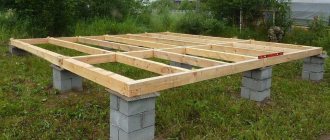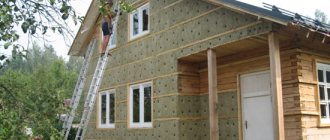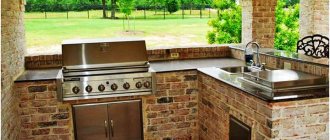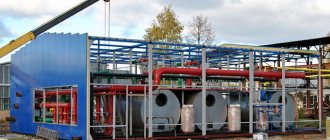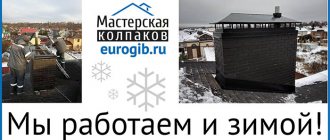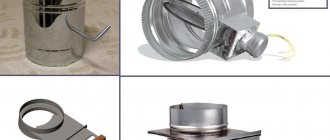The hangar is a vaulted room of enormous area. Often, a hangar, regardless of whether it will be used as a warehouse or as a storage place for large equipment, is built from profiled steel sheets attached to a metal structure frame. This design solution is due to the need to reduce the cost of construction, since we are always talking about large areas.
Since metal has very high thermal conductivity, hangars must be insulated to achieve the required temperature inside.
Since we are talking about large and very large volumes, it is worthwhile to insulate the room industrially.
What requirements must insulation for a hangar meet?
How to insulate a hangar if its design features - material and shape dictate some requirements that the thermal insulation material must meet:
- plasticity - under the influence of temperature changes, the metal surface of the hangar “plays”, i.e. it contracts and expands, so the insulation must be sufficiently plastic so as not to crack from such changes;
- high adhesion – a hangar is a large metal structure, and to insulate it you need a material that has good adhesion and is able to “catch” onto the smooth surface of the corrugated sheet;
- good thermal insulation properties - since the walls and roof of the hangar are very thin, the task of thermal insulation falls entirely on the insulation;
- light weight - frameless and frame hangars are usually built with a vaulted roof, i.e. the walls and roof are a single whole, and it is strictly forbidden to overload such a structure in order to avoid collapse.
All these requirements are met by insulating hangars with polyurethane foam (PPU).
Polyurethane foam: pros and cons
Hangars can be insulated using polyurethane foam. It has many advantages, including reliability, ease of installation, long service life, and resistance to various types of fungal formations. You can count on low thermal conductivity as well as benefits from an economic point of view. Polyurethane foam is quite common for the reason that it has the qualities of moisture resistance and resistance to temperature fluctuations. Insulating hangars with polyurethane foam is quite expensive, which is a disadvantage. Among other things, when choosing this material, you must be prepared for the only method of applying it - spraying, which will require special expensive equipment. Otherwise, it will be quite difficult to cope with the work.
Hangar insulation options

Insulating a hangar with mineral wool
An important element of the hangar is its insulation. To ensure optimal temperature, they resort to the use of various materials.
Sheathing with corrugated sheets and galvanization is carried out externally and internally. Internal insulation reduces the building area, but such insulation is highly effective.
External installation of panels has the main function and serves as protection against heating and hypothermia. This increases the service life.
Sandwich panels, ecowool, polyurethane foam (PPU), foamed polyethylene or penofol covered with foil, and mineral wool are usually used as thermal insulators.
Sandwich panels

When building a hangar from sandwich panels, insulation is not required
The material contains three layers. Two of them are made of galvanized metal sheet. The third serves as insulation. Often, mineral wool plays its role. The market offers wall and roof elements that differ in color.
Insulation using sandwich panels is an advantageous solution when constructing a hangar with straight walls. The panels act not only as a heat insulator. They serve as a fence and protection for the building. The elements are distinguished by their aesthetic appeal.
Wall insulation with sandwich panels is characterized by low thermal conductivity and a high level of strength. The panels are lightweight, which makes it possible to pour a shallow foundation.
Mineral wool
Basalt insulation is chosen to be lightweight so as not to overload the structure
Mineral wool is used as a separate material. It is assembled in layers. It has a density of 130-140 kg/m. The insulation does not change quality and shape with changes in temperature and can be used at elevated temperatures. Mineral wool is resistant to chemicals and weather conditions and protects the metal frame from rusting.
The material is used for any design model. It can also be used in the construction of frameless structures.
The main disadvantage is the lack of resistance to moisture. To eliminate water absorption, mineral wool is covered with a special membrane film. The same rules are followed when carrying out work inside a building.
The material is affordable, quick installation and easy to use. The price of mineral wool depends on the thickness, density and brand of the substance.
Ecowool
Insulating a hangar with ecowool is cheaper
Ecowool is a cellulose insulation material. It does not rot, does not ignite and does not become moldy. It is an environmentally friendly material.
Ecowool can be used to insulate hangars in which food products are stored. Installation can be carried out both outside and inside. It is carried out using a wet or dry method. In the latter method, cellulose fibers are blown between two surfaces. With the wet method, the fibers are wetted with water to which glue is added. The product is applied by spraying. Dense coating without seams and affordable cost make this type of insulation a priority.
Polyurethane foam
Polyurethane foam can be used to insulate frame and frameless hangars
Foam is applied to the surface of the hangar using a special apparatus in which the components of the insulating material are mixed. The finished mixture enters the sprayer under high pressure. On the surface, polyurethane reacts chemically with air, resulting in foam. The capture of air molecules increases the volume by 80-100 times. The material solves many problems thanks to its application method and technical characteristics. This insulation method is often used by developers, as installation is quick and easy.
Polyurethane foam is an ideal way to insulate an arch-shaped hangar. It has a high level of adhesion to metal and is applicable to any shape of structure.
The material provides a smooth surface without cracks or gaps. Does not require lengthy and expensive preparation for application. Insulation of hangars with polyurethane foam allows you to control the thickness of the insulation, which saves money.
Polyurethane foam has excellent adhesion to the surface of the walls, even with existing irregularities, bends or complex structural shapes. This explains the use of the substance for arched frameless structures and polygonal structures.
The service life of polyurethane foam insulation is 30 years. In the absence of bad weather conditions, the duration of use increases to 50 years. The hardened substance does not place additional load on the foundation. The cost of polyurethane foam depends on the thickness of the layer and the dimensions of the hangar.
Roll insulation
When constructing hangars in our production, roll insulation is most often used (we work with trusted manufacturers URSA, Knauf). The products are characterized by high density, which allows for better insulation of objects with a large area, including those with non-standard geometry.
Insulation in rolls does an excellent job of maintaining temperatures inside the building. The advantages of this type include:
- — simple installation;
- — use on objects of any purpose;
- — resistance to external factors;
- - a light weight;
- — maximum adherence to surfaces;
- - low cost.
Twisted rolls are convenient to use for both external and internal insulation. There are materials that are designed specifically for lining pipes and communications.
How and how to insulate a hangar from corrugated sheets
Almost always, before concluding a contract for spray insulation of a hangar, our clients ask many questions about the possibility of using mineral (stone) wool or polystyrene boards. We have made a brief summary for you.
It is possible or not. Cold structures based on metal structures, including hangars made of corrugated sheets , are insulated from the inside. Only this method preserves their external aesthetics and protects the insulation itself from atmospheric moisture. At first glance, with such an arrangement and taking into account the low cost of traditional materials, their use seems effective and profitable. In practice, several problems arise, and not all of them can be solved.
Installation. To insulate hangars with mineral wool or slab polystyrene, you will have to build an additional complex structure with which you can fix the slab, sheet or mat. It is long, difficult and expensive.
Traditional materials are chosen precisely because of their relative cheapness, but in this case it will not be possible to save money or the savings will not justify themselves.
With higher efficiency for insulating a hangar with polyurethane foam, the price may be lower than when using mineral wool. In the best case, the cost of thermal insulation with traditional materials may be lower, but only by 10-15%. At the same time, the spraying speed is up to 800 square meters. m per shift, the rate of insulation with mineral wool is 30-50 sq. m per shift.
What happens in practice with the operation of hangars insulated with mineral wool. It must be remembered that steam is generated everywhere and always, and it is impossible in principle to protect insulation from it 100%, because all materials used in construction, except metal and glass, are vapor-permeable to one degree or another. Plus, seams between slabs and mats are inevitable. And when installing slab insulation, an air gap inevitably remains between it and the wall of the hangar.

Let's consider the process of “water circulation in a separate hangar”, where insulation is done from the inside, as in the photo above.
Moisture tends outward → through the vapor barrier membrane → through the insulation → into the air gap → condenses from the inside on the metal → returns to the insulation.
The usual result of using traditional materials to insulate hangars from the inside is as follows. Mineral wool gets wet (or water accumulates between the seams of polystyrene boards), resulting in a number of problems. The insulation loses its thermal insulation properties. The weight of the cake increases significantly, which can lead to deformation of the frame. Metal structures gradually rust.
In winter, water turns into ice (remember, water expands when it freezes, increasing in volume by 1.091 times, that is, about 10%). This leads to heaving of the layers, tearing of the seams and separation of the insulation from the structure. When large volumes of moisture accumulate, the situation sometimes ends in tearing apart the joints of the hangar structure and causing leaks.
Ideally, when insulating a hangar with mineral wool, the gap between the insulation and the shell should be ventilated, as when insulating facades or roofs.
There is an option to install thermal insulation between the frame itself and the protective shell, as you see in the photo above. But in exploited structures this is problematic. And such hangars are more expensive than those insulated with polyurethane foam.
By choosing PPU hangar insulation with the correct selection of materials and adherence to technology, in just a few days (taking into account the time for calculation, delivery, preparation) you get:
– seamless and always dry thermal insulation, a monolith “tightly” bonded to the metal on every centimeter of area without air gaps; – maximum efficiency with a minimum layer thickness with a mass of only 2-4 kg per 1 sq. m.; – anti-corrosion protection of metal structures; – no risk of leaks.
Description of the main functional features of insulation
The main purpose of thermal insulation materials is to reduce heat loss from structures in winter and slow down the heating process of buildings in the warm season. In addition, proper installation of thermal insulation allows you to:
- save on heating;
- extend the period of operation of housing, industrial premises and other structures;
- minimize deformations of load-bearing elements that occur under the influence of changing temperatures;
- reduce the consumption of building materials used.
The necessary materials are selected strictly individually, taking into account a comprehensive assessment of their characteristics. These include porosity, vapor permeability, hygroscopicity, fire resistance and a number of other parameters, discussed in detail below.
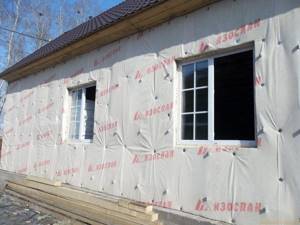
Thermal permeability coefficient of purchased building materials
One of the most important characteristics of each insulation is its ability to prevent heat loss. A low value of the indicator allows the minimum thickness of the insulator layer to be used in the work.
According to statistics, the leading positions in terms of the parameter under consideration are occupied by 2 types of materials: mineral wool and polystyrene foam. Their maximum values are 0.041 and 0.039 W/(m•°C), respectively.
Vapor permeability, or the ability to “breathe”
The presence of the described property allows TIMs to remove excess moisture vapor from buildings, thereby minimizing the possibility of rotting structures. Penoizol and various types of cotton wool are characterized by high coefficients. Plates made from extruded polystyrene foam practically do not have these properties (their indicator is 0.013 Mg/m*h*Pa).
The leader in vapor permeability is mineral wool, the coefficient of which is 0.60 units.

Strength, biostability and porosity
The three properties included in the subtitle are also among the most important. The first of these indicators allows us to determine the possibility of using materials in elements with additional loads. To find out which products are the most durable, you should listen to the opinions of experts - large construction companies. These specialists, who use the largest percentage of the total number of products produced in their work, consider basalt slabs and expanded clay to be the best (in terms of the property under consideration).
Only inorganic TIMs have the ability to resist decomposing biological processes, including the influence of rotting bacteria, fungi, and the influence of coating-destroying insects.
The highest porosity rates - a coefficient that affects a number of additional characteristics and determines the number of voids present in the material in relation to the volume (total) - are found in mineral wool (up to 97%), as well as insulation materials made from plant fibers and asbestos.
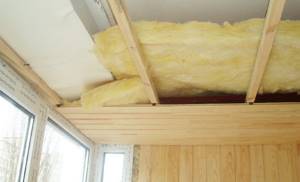
Product susceptibility to water
Among the properties that all materials possess without exception is the ability to absorb moisture, or hygroscopicity. The lower the indicator, the less tendency TIM has to shrink. The most reliable types of thermal insulation in this regard are polymer insulation, which absorb water in a minimal amount (from 0.05%). Mineral wool is recognized as the most hygroscopic, quickly losing its insulating ability at high humidity.
Fire resistance or fire resistance
The non-combustibility of thermal insulation is a determining factor in ensuring the fire safety of any structure. Fire-resistant types of insulation include fibrous inorganic materials; flammable - polyurethane foam; low-flammable - polystyrene foam.
No shrinkage and maintain durability
When analyzing the characteristics of materials declared by the manufacturer, you should pay attention to the strength of the insulator. With a long-term (complete) absence of shrinkage, the product retains high thermal insulation properties and prevents the formation of temperature bridges (areas with reduced thermal resistance)
The service life of the insulation should be close to the service life of the structure.

Additional properties of thermal insulation that do not require an extended description include:
- environmental friendliness;
- level of toxicity of products released during combustion;
- smoke generation;
- frost resistance;
- bending strength.
The need for insulation of the hangar
Complex thermal insulation of the hangar expands its functionality. An insulated building can be used as a sports or shopping complex, or an administrative and even residential building.
Installation of modern insulators allows you to create a favorable microclimate and protect the building from negative environmental influences. Many materials meet fire and environmental safety requirements, and do not harm the human body. The process of insulating a hangar is accompanied by high costs, but they are justified.
Noise insulation
Structures made of metal sheets and profiles are not protected from external noise. At the same time, good noise insulation is an important aspect when using a hangar as:
- Vegetable storage facilities.
- Trade area.
- Dormitories.
- Workshop.
- Sports complex.
- Buildings for keeping animals.
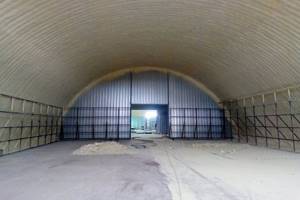
The hangar needs good sound insulation.
In an insulated structure, the sounds of rain or hail, as well as various street noises, are not heard.
Heat protection
The next function of hangar thermal insulation is maintaining a comfortable microclimate throughout the year. In winter, insulation reduces the level of heat loss, and in summer it prevents overheating. Such features are important when using the structure for domestic purposes or storing any products.
Strengthening
Installation of several layers of thermal protection gives the hangar walls additional strength.
In addition, the insulated structure is not subject to corrosion, so it retains its attractive appearance longer without rust.
Advantages of insulated hangars
Some people believe that investing in insulation is unprofitable. In fact, insulated frameless hangars have a number of positive characteristics compared to conventional structures:
- The ability to create an ideal microclimate for storing grains and vegetables, which extends their shelf life.
- The range of uses for the premises is expanding. Insulated frameless hangars can be used as a fitness center, food storage, or car service center.
- High level of sound insulation. The erected metal structures are poorly insulated from noise.
- Prevents corrosion and eliminates overheating of the building.
- Fire safety of the building.
- The service life of the structure increases by 20-30 years.
Insulation with mineral wool
To make mineral wool, limestone, soda, sand and glass are used, which determines the excellent performance qualities of this material:
- The low value of thermal conductivity allows you to create high-quality protection against heat loss.
- A high degree of sound insulation makes it possible to prevent noise from penetrating inside the hangar.
- Long service life without performance degradation.
- Mechanical damage or deformation due to prolonged mechanical load on the surface is excluded.
- Mineral wool is a non-flammable material and does not contain substances hazardous to humans or the environment.
- High resistance to the spread of fungi, mold and other microorganisms.
- Lack of reaction when exposed to chemically active substances.
The only drawback of mineral wool insulation is its high hygroscopicity, which requires taking additional measures to protect this material from moisture.
Mineral wool installation technology
When frameless hangars are built, insulation is the next stage. Work using mineral wool is carried out in the following sequence:
- During the installation of the arch, the installation of embedded parts is carried out.
- The embedded parts act as a support for the installation of lathing made of galvanized corners and boards treated with an antiseptic.
- Install mineral wool slabs until the internal surface is completely covered.
- The entire surface of the thermal insulation material is protected with a vapor barrier film.
- The inner surface of the frameless hangar is lined using a profiled galvanized sheet of steel.
The use of such technology for insulating hangars can effectively reduce heat losses, eliminate freezing of the walls and the accumulation of condensation in the heat-insulating material.
general information
Product delivery and storage
- Khimtrust products are available in warehouses in Nizhnekamsk, Novosibirsk, Irkutsk, Yekaterinburg, Krasnoyarsk, Voronezh, Yaroslavl, Nizhny Novgorod, Moscow, St. Petersburg, Samara and Ufa. Or at our dealers.
- Products in original, sealed packaging with labels.
- Components for polyurethane foam - "Khimtrust SKN" should be stored at temperatures from -40°C to +40°C indoors, avoid exposure to sunlight and precipitation.
- If the product packaging is not sealed, damaged, or has expired, do not use it.
- When working with materials from other manufacturers and combining them with Himtrust products, seek advice from the technical service.
Environment
- Follow the instructions, safety regulations and environmental protection regulations.
- Temperature conditions for working with polyurethane foam vary from +20°C to +40°C. This applies to both the environment and the surface.
- If the temperature is below +10°C, use winter systems and work with priming layers. Do not apply polyurethane foam if the surface temperature is below -5°C or above +60°C.
- Do not apply polyurethane foam if the surface temperature is below -5°C or above +60°C.
How to control quality while working in the field
- Keep a quality control log, record all data about the weather, air temperature, surface, humidity, wind speed.
- Measure the thickness of the sprayed material, the area of spraying and the amount of product that was used to cover the surface.
Comparative analysis
A basic comparison of characteristics shows that the degree of insulation of all materials is almost the same; polystyrene foam and polyurethane foam have the minimum weight. Moreover, the calculation did not include the weight of the frame structure, which is necessary if mineral wool or hard foam material is used. The safest way to protect against fire is to use stone wool. However, liquid polyurethane is the easiest to install.
Another important characteristic is the cost of materials. The most expensive are stone wool insulation, the cheapest are foam boards. The choice of thermal insulation for a warehouse depends on the design features, wall material and financial capabilities.
Modern prefabricated structures
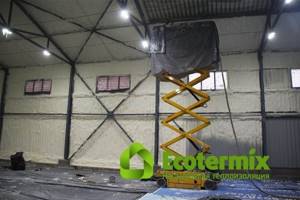
PPU is the fastest and easiest way to insulate a hangar
As you know, a hangar is a construction structure made using frame or frameless technology. The configuration of the hangar and its equipment directly depend on the operational tasks set by business owners or tenants.
For example, frameless versions of arched structures are designed in such a way that they can be assembled at the place of use within a few days, insulated and used for their intended purpose. But how can we reduce the time it takes to insulate these structures? There are a large number of methods for insulating rooms. For example, for these purposes builders use mineral wool, extruded polystyrene or polyurethane foam. Read more about the insulation of hangars in this article - /kakie-materialy-tehnologii-ispol-zuyutsya-pri-uteplenii-sklada/.
What is PPU?
Polyurethane foam or polyurethane foam or PPU is a unique thermal insulation material. It is 90% air, enclosed in tiny bubbles. The shell of the bubble is made of the thinnest polyurethane film.
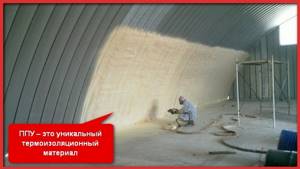
Foam is applied to the surface using a special apparatus in which the components of the future insulation are mixed. The finished mixture is fed into the sprayer under high pressure. As soon as polyurethane hits the surface, it enters into a chemical reaction with atmospheric air and begins to foam. Due to the capture of air molecules, its volume increases 80-100 times.
This application method allows you to insulate a hangar of any configuration, filling even the smallest joints.
PPU is a material with a high degree of adhesion. The foam sticks and is fixed on the surface of any material, even the smoothest.
It does not require any additional efforts to pre-prepare the surface before application - it is enough to mechanically clean it of dust.
Features of applying polyurethane foam
This type of thermal insulation belongs to the group of gas-filled plastics, which are popularly called foam plastic. Polyurethane foam is similar to resole, polystyrene foam and urea types of plastic products.
Two types of liquid are transported to the hangar location:
- isocyanate;
- polyol
Connection diagram of the components of the installation for spraying polyurethane foam under pressure.
Using air atomization technology, both liquids are mixed inside the nozzle under the influence of air pressure. Thanks to this method, the smallest particles create a kind of aerosol, which is applied in an even layer to the surface of the metal structure, reaching even the most inaccessible areas. All kinds of cracks, holes and cracks are carefully sealed, forming an airtight layer.
During application to the hangar, a chemical reaction occurs in the polyurethane foam mixture - the spray foams and begins to harden. After 2 hours, the layer of applied mixture hardens by 90%, and after 24 hours this figure is 100%.
In the form in which polyurethane foam is applied to the surface, the mixture contains many pores, since its content is 80-90% air. It is thanks to air that the polymer properties of the material acquire thermal insulation characteristics of high strength.
Polyurethane foam exhibits good resistance to acid, alkali, oil, fuel and oil, which exists in any hangar. For this reason, it is ideal for rooms of this type. Due to the high level of adhesion, polyurethane foam can be applied to the following types of surfaces:
- metal;
- reinforced concrete;
- arched openings;
- ceiling covering;
- coverings with recesses and protrusions.
Considering that polyurethane foam is highly resistant to evaporation and moisture, there is no need for additional surface protection with vapor and waterproofing materials.
Also, PU foam does not need to be protected from rodents and mice, since animals do not touch the surface treated with such material. In addition, mold or mildew does not form on it. Polyurethane foam is not exposed to atmospheric and temperature effects; it can only be destroyed by mechanical damage.
Advantages of insulating vegetable storage with polyurethane foam
PPU is a universal material. It can be used to insulate a hangar from the inside and outside, to waterproof basements and create the necessary microclimate in vegetable storages.
To preserve vegetables until the next harvest, it is important that the correct microclimate is constantly maintained inside the warehouse where they are stored - certain parameters of humidity and air temperature are observed. This can be achieved by using foamed polyurethane for thermal insulation - it not only insulates heat, but also waterproofs it - it prevents both the evaporation of moisture from inside the storage facility and the penetration of its excess from the outside.
It is the waterproofing properties that make insulating a grain warehouse with polyurethane foam the optimal option - a low level of humidity is very important for storing grain crops. Otherwise, the grain may bloom, which will lead either to its complete loss or to a decrease in its grade.
In addition, thermal insulation of wooden granaries with polyurethane foam helps prevent woodworms and other harmful insects from breeding in the wood, since the coating has protective properties.
Economic feasibility of choosing Ecotermix
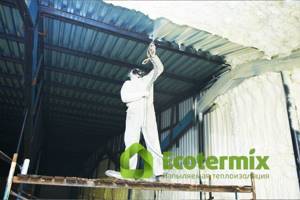
PPU hardens in a matter of minutes
Another pleasant fact is that the use of polyurethane foam material for insulating rooms allows you to save money. Indeed, a service life of several decades without loss of performance makes the cost of Ecotermix polyurethane foam the most attractive.
It is worth investing once in the thermal insulation of hangars and warehouses and forget about the costs of this area for many years. In addition, the seamless and completely sealed insulation option significantly reduces heating costs.
Insulation of frameless hangars
There are two ways to insulate a frameless hangar - insulation with sprayed polyurethane foam and thermal insulation boards. If the hangar is arched, then installing the heat insulator is quite problematic, and its complete adherence to the inner surface is almost impossible or associated with serious financial costs. That’s why the main method of insulating arched frameless hangars
is sprayed polyurethane foam. Firstly, due to its excellent adhesion, this material does not require a fixing frame. Polyurethane foam is sprayed onto the surface without seams, leaving no cold bridges for heat leakage. Polyurethane foam (closed cell) does not require protection from wind, vapor and moisture. It is usually applied indoors. Gates and doors that open outwards can also be insulated with polyurethane foam, coated with a polymer protective composition (for example, paint) to protect them from ultraviolet radiation.
PPU not only does not put a load on the structure, but also strengthens it, which is important for frameless hangars. The polyurethane foam coating has a fairly aesthetic appearance, which does not require finishing; if desired, it can be painted with fire-retardant paint.
So, what determines the qualities of polyurethane foam? Polyurethane foam
- one of the types of gas-filled plastics, that is, polyurethane foam - polystyrene foam. Its relatives are urea, resole and polystyrene plastics.
Polyurethane foam
are delivered to the construction site in the form of barrels with two types of components - isocyanate and polyol. Using a high-pressure dispenser (140 atm), liquids are mixed with each other in the nozzle of a spray gun, which is periodically cleaned (usually with compressed air). A fine aerosol covers the hangar with an even layer, penetrating into the most inaccessible places, clogging all holes and cracks. After contact with the surface, chemical reactions occur in the mixture, the mixed material immediately foams and then hardens. After a couple of hours, the insulation reaches 90 percent strength, and is completely strengthened within a day. In its final form, polyurethane foam is a finely porous product, consisting of 80-90% inert gas. It owes its structure and gas bubbles to its technical characteristics.
Insulation of hangars with polyurethane foam
does not create unnecessary difficulties. This material is resistant to acids, alkalis, it resists the effects of petroleum products, oils, and solvents. Therefore, the use of polyurethane foam for insulating garages, hangars and farms is the best solution. The excellent adhesion of polyurethane foam to most building materials allows you to cover metal, reinforced concrete, concrete surfaces, ceilings, ledges and arches with thermal insulation. This material does not absorb moisture and does not allow steam to pass through. Therefore, polyurethane foam does not need protection with vapor-proof films. In addition, mice and rats do not like polyurethane foam. Fungus and mold do not grow on it. The material is practically indestructible unless mechanical or thermal stress is applied to it.
Sprayed thermal insulation PENOGLAS
– an ideal material for solving the problem of insulating a frameless arched hangar. The use of this heat insulator for insulating vegetable storage is ideally suited for our climatic conditions.
The answer to this question is clear - rigid polyurethane foam with a closed cell and containing fire retardants. Some careless contractors, in pursuit of profit, use open-cell polyurethane foam (so-called light foam) to insulate objects. Open-cell polyurethane foam is practically foam rubber; it is not a vapor barrier and absorbs moisture over time. This is especially important to take into account when insulating vegetable stores, because the moisture rising from the vegetables will be absorbed into the insulation. Over time, it will not only lose its heat-insulating properties, it will simply fall off. Polyurethane foam for frameless hangars must necessarily contain fire retardants. There were cases when, in order to save money, contractors/customers chose systems that did not contain fire retardants insulation - they say, there was nothing to burn in the vegetable storehouse, however, during welding work, short circuits, or careless handling of fire, polyurethane foam flared up. As a result of thermal deformation, the entire structure collapses. Conclusion - there is no need to save a penny on what the safety of an object depends on.
To ensure fire safety in garages, workshops or storage facilities, remember the following rule:
- Spray polyurethane foam must contain fire retardants.
- Carry out installation and welding work only after you are sure that the polyurethane foam in your hangar will not flare up from any spark. High-quality polyurethane foam is a self-damping material.
PPU insulation: pros and cons of using technology
The PPU house insulation technology has a lot of different reviews, both positive and negative. Let's consider what is more, advantages or disadvantages, and whether it is worth giving preference to this type of insulation.

To spray polyurethane foam it is necessary to use high-pressure equipment
The main advantage of this method of providing a building with high-quality thermal insulation is its high efficiency. Thanks to its cellular structure, this material retains heat perfectly. But there are other advantages that should not be overlooked:
- the absence of seams and joints eliminates the occurrence of such a phenomenon as “cold bridges”, which has a positive effect on heat conservation;
- You can spray polyurethane foam onto any surface, even one that is complex in design or texture;
- the low level of hygroscopicity of the material has a positive effect on the waterproofing properties of the surface;
- Polyurethane foam adheres to any surface except polyethylene. It is interesting that this quality, which is positive at first glance, can also be considered a disadvantage, since it is almost impossible to wash polyurean foam, and there is no solvent for it. The only way to get rid of it is to peel it off by hand, and this almost always results in significant damage to the surface on which it was applied;

Insulation of the attic with polyurean foam
- The service life of polyurethane foam with full preservation of all technical characteristics of the material is 25 years. After this, the thermal insulation continues to operate, although the thermal conductivity of the spraying increases;
- spraying is done quite quickly, so carrying out all the necessary work will not take much time;
- the material is self-extinguishing and does not support combustion even in the event of a fire;
- the vapor permeability coefficient is 0.05-0.06, which allows you to effectively remove excess moisture after insulating the walls with polyurethane foam.
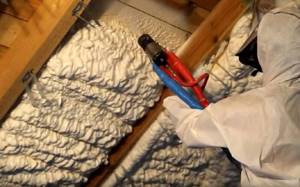
Spraying hard polyurethane foam
Disadvantages of polyurethane foam insulation: pros and cons
As you can see, the number of positive characteristics of this material is large, and we can say that all these positive aspects fully justify its use as insulation. However, PPU also has disadvantages, and it is better to know about them in advance:
- the cost of spraying polyurethane foam is approximately 1.5-2 times higher than if you use mineral wool as insulation;
- compliance with spraying technology directly determines the life and quality of its service. Only if you have high-quality equipment and appropriate duster experience, is it possible to obtain the desired result;
- Do-it-yourself insulation of polyurethane foam is a very complex and often unjustified process. This is largely due to the high cost of the required equipment, as well as the lack of proper experience in this area;
- polyurethane foam does not burn, however, in the event of a fire it emits a lot of dangerous acrid smoke;
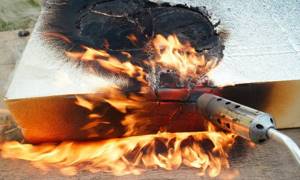
The flammability of polyurethane foam is quite low
As a result of exposure to ultraviolet rays, the foam deteriorates, losing its original appearance, changing color from white to dark brown.
Fortunately, most of the proposed shortcomings can be neutralized, for example, by inviting an experienced specialist to work with his equipment and providing the surface with a finishing finish, which will further protect the polyurethane foam layer. But the main limiting factor for insulation with sprayed polyurethane foam is the price, which, nevertheless, is fully justified by the long service life of the coating.
The main advantages of thermal insulation with polyurethane foam
Despite the high cost, polyurethane foam thermal insulation has a number of important advantages. It allows you to protect the hangar room from heat loss, street noise and other negative factors.
Environmental friendliness
PU foam does not contain formaldehyde or phenolic resins, which are found in expanded polystyrene or mineral wool products. Therefore, it can be used to insulate buildings where food, vegetables and grains are stored.

Polyurethane foam does not contain phenolic resins.
Surface solidity
The foam is applied in an even layer without seams, which contributes to the appearance of a monolithic coating.
The solution is distributed under a pressure of 140 atm, so it completely fills all the cracks, voids and gaps.
Chemical resistance
Polyurethane foam is not afraid of exposure to solvents, chemicals, alkalis and acids. In addition, its composition and density do not change upon contact with steam or water.
Thermal properties
The material has increased thermal insulation properties. With identical thickness, it is 2 times more efficient than traditional solutions. Therefore, developers can reduce the thickness of the insulation layer while maintaining optimal thermal conductivity.

Polyurethane foam has good thermal insulation properties.
Vapor barrier characteristics
PPU does not require the application of a vapor barrier film. The foam does not accumulate condensation and does not allow steam to pass through.
Physical and mechanical features
Polyurethane foam is distributed over the surface without installing additional fasteners. After the surface hardens, it becomes monolithic and rigid. This increases the safety margin of the hangar structure and allows it to withstand heavy loads.
Lifetime
Using polyurethane foam, you can form a monolithic coating with a long service life. The service life declared by the manufacturer is 30-50 years. Minor defects and mechanical damage can be eliminated by filling a new portion of the solution.
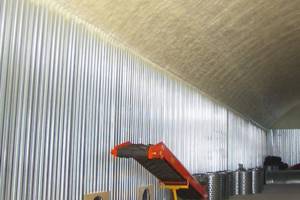
The service life of polyurethane foam is 30-50 years.
Materials for floor insulation

In addition to insulating the walls, you will need to insulate the floors in the hangar. For this purpose, sheet materials, bulk mixtures or liquid compositions are used. Installation is usually carried out directly on the ground; additional basic structures are rarely used. It is technically possible to organize “warm floors” (both electrical and water systems) in the hangar.
Insulation materials for metal structures are selected based on the purpose and design of the hangar
Such an event will not be cheap even if insulated with economical materials, therefore more attention is paid to the effectiveness of thermal insulation
Farming activities are not complete without the use of a hangar, which is necessary for storing vegetables and grains. Among other things, such premises are used for the location of equipment and are used as places for keeping poultry and cattle.
Insulation of hangars with polyurethane foam: price
As we already mentioned, you are not buying a layer of insulation, but thermal resistance. And yet, in the table for insulating hangars with polyurethane foam, the price for guidance is given depending on the thickness of the foam layer for a volume of work from 500 m2 (for example, the surface area of a typical arched hangar 15 m long and 7.5 m wide is 648 m).
Begemot Group of Companies provides a 10-year guarantee. We have been working in the market for 14 years. We don't do anything offhand. For each object we carry out thermal engineering calculations and select an option that fully meets the task. You cooperate with us without risks.
After measurements and thermal engineering calculations, we will calculate an estimate, where we will indicate, to the nearest ruble, how much it costs to insulate a hangar with polyurethane foam in your particular case. For large volumes of work, preferential rates apply.
| Heat transfer resistance R – thickness of polyurethane foam | 2.5 (m2 °C/W) – 50 mm | 3.5(m2°C/W) – 70mm | 5(m2°C/W) -100mm |
| price excluding transport and other additional costs, rub. | 900 | 1300 | 1900 |
For questions about insulating a hangar with polyurethane foam, price , terms and dates for completing the application, please call 8-800-302-90-50, write a request by email or use the feedback form. Engineers will contact you at the time you specify.
PRICE LIST for thermal insulation services
| The cost of insulation with polyurethane foam (PPU) depending on the area with a thickness of 50 mm. | ||||
| Type of work | The cost of insulation when ordering an area | |||
| Up to 200 m2 | 200-400 m2 | 400 -1000 m2 | >1000m2 | |
| Spraying polyurethane foam with an average density of 25 kg/m3 | 700r/m2 | 650r/m2 | 600r/m2 | Negotiable |
| Spraying polyurethane foam with an average density of 35 kg/m3 | 800r/m2 | 750r/m2 | 650r/m2 | Negotiable |
| Spraying polyurethane foam with an average density of 45 kg/m3 | 1000r/m2 | 920r/m2 | 870r/m2 | Negotiable |
| Special conditions for construction companies and architectural bureaus! |
| The cost of insulation with polyurethane foam (PPU) depending on the volume in m3. | ||||
| Type of work | The cost of insulation when ordering an area | |||
| Up to 5 m3 | 5-10 m3 | 10-20 m3 | >20 m3 | |
| Spraying polyurethane foam with an average density of 8-12 kg/m3 | 6000r/m3 | 5500r/m3 | 5000r/m3 | Negotiable |
| Spraying polyurethane foam with an average density of 25 kg/m3 | 11000r/m3 | 10500r/m3 | 9500r/m3 | Negotiable |
| Spraying polyurethane foam with an average density of 35 kg/m3 | 14000r/m3 | 13500r/m3 | 13000r/m3 | Negotiable |
| Spraying polyurethane foam with an average density of 45 kg/m3 | 18000r/m3 | 17500r/m3 | 16000r/m3 | Negotiable |
| Special conditions for construction companies and architectural bureaus! |
The price may change depending on the difficulty of accessing the surface. Minimum order 30,000 rubles.
will perform seamless insulation of hangars of any geometric shape (arched, hipped, straight-walled) using sprayed polyurethane foam. We work at facilities in Moscow and the Moscow region, and are ready to consider applications from neighboring regions.
Vestiges of the past
The price of insulating a hangar or warehouse using polyurethane foam spraying will depend primarily on the area of the structure and the complexity of its configuration. But given the large volumes, it cannot be low. Therefore, some contracting organizations, caring more about their own benefit than the benefit of the client, propose, in order to save money, to insulate the hangar using mineral wool, polystyrene foam or hot bitumen. But this is a dubious benefit - these materials have already lost their relevance, since their use is less effective compared to spraying polyurethane foam and has a number of limitations.
Mineral wool - the material is very hygroscopic, i.e. strongly absorbs moisture and can retain it for a long time, and wet cotton wool loses up to 90% of its thermal insulation properties.

Formally, it is considered fireproof because it does not burn. But under the influence of high temperature it releases toxic formaldehyde, which is a strong carcinogen.
It will not be possible to insulate a hangar made of corrugated sheets with mineral wool, since this is a heavy material and thin metal sheets of the walls, and even more so the roof, will not withstand such a load.
During installation, seams remain - the weak link in any thermal insulation chain.
Polystyrene foam is a very brittle material, so it is only suitable for covering flat surfaces. When installing it, anchors are used, which violates the integrity of the base; in addition, dew points form at the attachment point and at the joints of the sheets. This material is highly flammable and, when burned, releases extremely toxic substances, so in some rooms it is prohibited from being used by fire safety regulations.

Short-lived - service life is about 15 years.
The technology of insulating hangars with hot bitumen is used quite rarely. The material is too heavy for thin vaulted structures.
But insulating a warehouse with hot bitumen is quite possible. For example, a flat roof to avoid heat loss through the roof, or insulation of basements, which will serve as additional waterproofing.
But bitumen is short-lived, the application technology is quite complex, and is not suitable for all structures.
Advantages and disadvantages
Let's start with the advantages:
- Today, polyurethane foam insulation is the most effective. This is due to the cellular structure of this insulation and the carbon dioxide contained in the cells. Ideally, this system gives a thermal conductivity coefficient of 0.02, which is even lower than that of air (0.022).
- Continuous, seamless spraying, which eliminates the presence of cold bridges, further increasing the efficiency of insulation.
- Possibility of spraying on surfaces of any, even the most complex shapes.
- Low hygroscopicity. Simultaneously with insulation, you improve the waterproofing characteristics of the surface. This property is used for insulating foundations, wells and other similar structures.
- Excellent adhesion to any surfaces and materials except polyethylene. Excellent adhesion (adhesion) in some cases can be considered as a disadvantage - it cannot be washed off with anything, since there is no solvent for polyurethane foam. It can only be cleaned mechanically, often with fragments of the surface on which it was applied.
- Long service life - up to 25 years with the declared characteristics, later carbon dioxide is replaced by air, thermal conductivity increases, but not catastrophically, sprayed thermal insulation continues to work.
- If during the first year the insulation with polyurethane did not cause any complaints, there will not be any for the next couple of decades.
- When using high-pressure installations, polyurethane spraying takes a short period of time, without compromising quality.
- The vapor permeability of polyurethane foam is quite high - 0.05-0.06, which allows excess moisture to be removed through the walls, as before insulation (if the walls are vapor permeable).
- Does not support combustion (self-extinguishing).
As you can see, there is a decent list of advantages that contribute to the fact that thermal insulation with polyurethane foam is gradually becoming more and more popular. But there are also disadvantages:
- High price - 1.5-2 times higher than when insulating with mineral wool. But if you calculate it per year of service, it won’t be more expensive.
- The final result depends greatly on the equipment used and the experience of the duster. Good results are achieved only with full compliance with the technology.
- Due to the use of high-tech equipment, polyurethane foam insulation is very, very difficult to do with your own hands. There is a way out - to buy equipment together for several owners - there is a reason for this, considering the prices. But the question of experience remains - achieving normal performance on your own is very difficult.
- The material does not burn, but when burned it emits a lot of caustic and harmful smoke.
- Fear of ultraviolet radiation. When exposed to sunlight, the foam melts and the white surface turns dark brown. But a film of a certain thickness protects the underlying layers from further destruction, so if the polyurethane foam is thick enough, it can even be left open. But the appearance of the surface insulated with polyurethane foam is far from the best, so finishing is still required.
The main limiting factor in the spread of polyurethane foam insulation is the high price. Although, when compared with the cost of insulation with extruded polystyrene foam, the prices do not seem so high, and this despite the fact that sprayed thermal insulation is installed many times faster and gives a better result. Overall, if you are planning to insulate your home, this technology is worth exploring.
Thermal insulation process using polyurethane foam
Hangar premises can be framed or frameless. The 2 options have both positive and negative properties. At the same time, it is necessary to select the appropriate insulation technology for them.
Frame hangar
The structure consists of a metal frame, is installed on a solid foundation and finished with suitable material. The frame is easy to dismantle and reassemble. All structural elements are secured with bolts. The shape of the frame affects the functionality and efficiency of the hangar.
Channels, pipes, I-beams and other metal products are used as the basis for the frame. The structure can be treated with a primer of any color.
Models based on a metal frame have the following advantages:
- A strong foundation.
- Durable load-bearing structures.
- Resistant to mechanical stress.
However, the construction process takes a long time. Under favorable weather conditions, pouring the foundation takes 2 weeks. If it rains constantly, it can drag on for a month.
Insulation in a frame hangar is applied using generally accepted technology. Initially, the surfaces are prepared, then the components are mixed and the solution is evenly distributed.
Frameless
Such hangars can be erected immediately on the construction site using mobile special equipment. The construction process involves profiling and corrugating steel in rolls to give an optimal radius. Then the arched structures are connected into blocks using edging equipment, lifted by a crane and secured to the finished foundation. The hangar elements are fixed by spot welding and bolts.
Frameless structures do not allow water to pass through, have sealed seam fasteners and are aesthetically pleasing. However, due to the arched layout, the usable area is reduced. Such a hangar can only be installed once, because... it cannot be dismantled. If damage occurs, it will be impossible to repair the building.
The specifics of insulation of frameless hangars provide for a number of restrictions associated with the choice of insulators. Additional elements cannot be attached to metal structures using self-tapping screws or other fasteners, because this will lead to a violation of the integrity of the structure.
When applying insulation to a frameless hangar, there is no need to install wind protection or lay vapor- and waterproofing film.
Internal and external insulation
There are external or facade insulation of walls with polyurethane of the following types:• plaster facade• ventilated facade• brick facade.
For external insulation of walls using the “ventilated facade” type, it is necessary to install a sheathing made of metal profiles or wooden blocks. Further application of insulation will be no different from the insulation of a plaster facade.
The thermal insulation layer can be installed both outside and inside the wall. For most materials, external thermal insulation is preferable.
This is due to the fact that it allows the dew point (the area where condensation forms) to be moved away from the wall, preventing the destruction of its components. When using this method, the usable area of the premises is not reduced.
But it also has disadvantages: the appearance of the facade changes, and installation work can only be carried out in dry weather.
Internal thermal insulation does not affect the appearance of the facade, and you do not need to wait for good weather to install it. But the shift of the dew point into the inner space of the wall and the reduction in the usable area of the premises do not allow making a clear choice in favor of this method.
IMPORTANT!
When installing internal thermal insulation, you need to bring out sockets and other internal communications without walling them up.
The effectiveness of a particular method also depends on the selected material. Polyurethane is laid in a relatively thick layer, and its installation on the inside of the wall significantly reduces the amount of free space in the premises. Although the material is moisture resistant, the formation of condensation cannot be ruled out when the dew point is shifted inside the wall.

Dew point
These factors make it preferable to choose external thermal insulation when using polyurethane.
